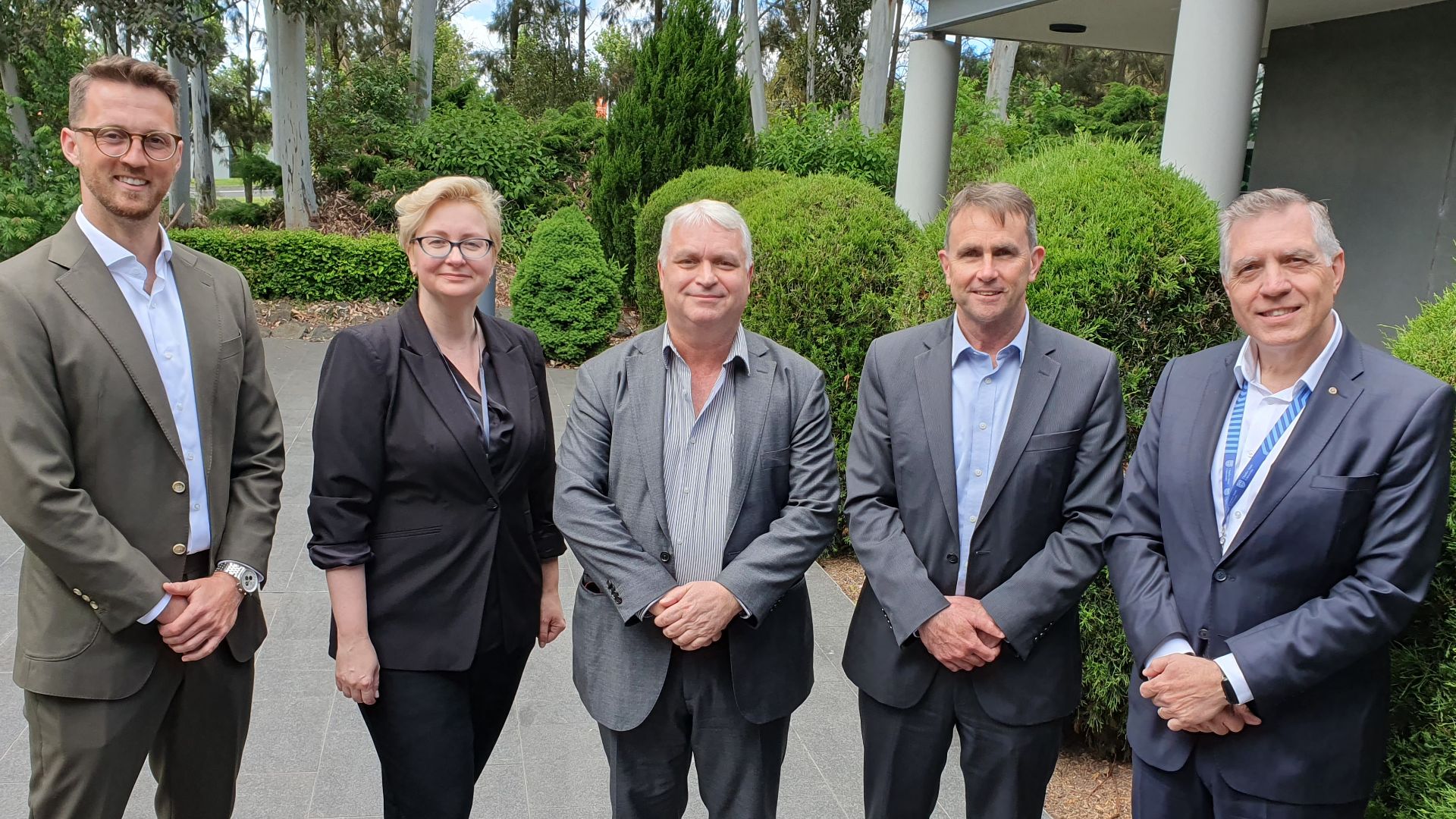- Academics and industry professionals combined their expertise at the recent Charles Sturt University-IBM Research Co-creation Sandpit event
- ‘Sandpit’ is a method of producing collaborative projects between academics and industry to encourage innovation, creativity and co-creation in research design
- Research areas considered included regionalisation of the cybersecurity workforce, how to drive diversity and inclusion in STEM careers at scale, as well as integrating academic learning and on-the-job training
Representatives of Charles Sturt University and IBM met in Bathurst last week to co-create project ideas as part of the activation of the research element of their partnership.
 Executive Director of the Charles Sturt Artificial Intelligence and Cyber Futures Centre Professor Ganna Pogrebna (pictured on right, with IBM's Ms Julie Fairley) led the Charles Sturt University-IBM Research Co-creation Sandpit event.
Executive Director of the Charles Sturt Artificial Intelligence and Cyber Futures Centre Professor Ganna Pogrebna (pictured on right, with IBM's Ms Julie Fairley) led the Charles Sturt University-IBM Research Co-creation Sandpit event.
Professor Pogrebna said the event brought together University academics and IBM practitioners to generate new collaborative research ideas.
“The ‘sandpit’ method of producing collaborative projects between industry and academia encourages innovation, creativity and co-creation in research design to develop new initiatives around a specified set of themes,” Professor Pogrebna said.
“The research areas discussed included data science and cybersecurity, agriculture, water, and environment, artificial intelligence and imaging and national security intelligence and security studies.
“The sandpit produced an action plan of pathways to achieve collaborative goals.”
The steps in this process will involve further operationalisation of collaborative plans, identification of both collaborative and additional funding sources (through federal and state government, industrial initiatives and/or philanthropy) and co-creating with local regional stakeholders to ensure ideas are relevant and beneficial to regional communities.
The agenda provided three areas of focus for co-creation discussions:
 Regionalisation of the cybersecurity workforce
Regionalisation of the cybersecurity workforce
Cybersecurity is an important challenge in regional Australia. Individual households, farms, Small to Medium Enterprises (SMEs), regional health organisations, and regional businesses all use digital technology and data across multiple ecosystems. This creates a number of vulnerabilities related to critical infrastructure risks, data loss risks, etc. The recent Australian Signals Directorate’s REDSPICE program aims to create 1,900 additional cybersecurity roles in regional Australia. Opportunities that were highlighted during the event included co-designing a range of micro credentials (online, on-site, as well as residential opportunities) to help get more regional and rural communities involved in cybersecurity, involving individual and small businesses into STEM-related workshops, hackathons, and technology demonstration days to achieve better cybersecurity outcomes as well as to nurture local regional talent in cyber.
Driving diversity and inclusion at scale
There is a significant gap in opportunities to engage in STEM, data-driven and cyber opportunities between majority groups and underrepresented groups of the Australian population (especially in regional areas). The sandpit session identified the following research projects – working directly with First Nations people to co-design culturally relevant and inclusive education in cybersecurity based on the ‘country-centric’ rather than ‘individual-centric’ understanding of technology, hosting coding competitions with specific emphasis on underrepresented groups to help build capacity among underrepresented and/or marginalised communities (including First Nations, neuro-diverse, and gender-diverse groups) in order to develop specific research projects in this area.
Integrating academic learning and on-the-job training
IBM is committed to investing in the future of work and upskilling the community on disruptive technologies, with a focus on underrepresented communities. Participants of the sandpit session considered how IBM and Charles Sturt University can make digital careers more accessible to the community via internships, apprenticeships and industrial PhDs.
NSW Deputy Premier and Member for Bathurst Mr Paul Toole, MP, said, “This partnership is about creating jobs of the future and it is all going to take place in our very own backyard and will complement the work across the area already being completed.
“This is the start of creating our own ‘Silicon Valley’ in Bathurst having links to Charles Sturt University, IBM, Spatial Services and TAFE.”






Social
Explore the world of social